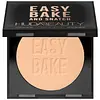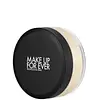Huda Beauty Easy Bake & Snatch Pressed Brightening & Setting Powder Versus Make Up For Ever HD Skin Setting Powder
What's inside
What's inside
 Key Ingredients
Key Ingredients

 Benefits
Benefits

 Concerns
Concerns

 Ingredients Side-by-side
Ingredients Side-by-side

Mica
Cosmetic ColorantBoron Nitride
AbsorbentNylon-12
Magnesium Myristate
Caprylic/Capric Triglyceride
MaskingButyl Avocadate
Skin ConditioningOlea Europaea Fruit Oil
MaskingHyaluronic Acid
HumectantTocopherol
AntioxidantRicinus Communis Seed Oil
MaskingPhenoxyethanol
PreservativeDimer Dilinoleyl Dimer Dilinoleate
EmollientOctyldodecyl Stearoyl Stearate
EmollientSodium Dehydroacetate
PreservativeCI 19140
Cosmetic ColorantIron Oxides
Mica, Boron Nitride, Nylon-12, Magnesium Myristate, Caprylic/Capric Triglyceride, Butyl Avocadate, Olea Europaea Fruit Oil, Hyaluronic Acid, Tocopherol, Ricinus Communis Seed Oil, Phenoxyethanol, Dimer Dilinoleyl Dimer Dilinoleate, Octyldodecyl Stearoyl Stearate, Sodium Dehydroacetate, CI 19140, Iron Oxides
Mica
Cosmetic ColorantKaolin
AbrasiveSilica
AbrasiveZea Mays Starch
AbsorbentLauroyl Lysine
Skin ConditioningCaprylyl Glycol
EmollientPentylene Glycol
Skin ConditioningDicaprylyl Carbonate
EmollientSqualane
EmollientEthylhexylglycerin
Skin ConditioningSodium Dehydroacetate
PreservativeTocopheryl Acetate
AntioxidantTocopherol
AntioxidantCI 77007
Cosmetic ColorantCI 77491
Cosmetic ColorantCI 77492
Cosmetic ColorantIngredients Explained
These ingredients are found in both products.
Ingredients higher up in an ingredient list are typically present in a larger amount.
Mica is a naturally occurring mineral used to add shimmer and color in cosmetics. It can also help improve the texture of a product or give it an opaque, white/silver color.
Serecite is the name for very fine but ragged grains of mica.
This ingredient is often coated with metal oxides like titanium dioxide. Trace amounts of heavy metals may be found in mica, but these metals are not harmful in our personal products.
Mica has been used since prehistoric times throughout the world. Ancient Egyptian, Indian, Greek, Roman, Aztec, and Chinese civilizations have used mica.
Learn more about MicaThis ingredient is a preservative with antimicrobial properties. It is the sodium salt of dehydroacetic acid.
It is especially effective at preventing bacterial and fungal growth in low concentrations.
Tocopherol (also known as Vitamin E) is a common antioxidant used to help protect the skin from free-radicals and strengthen the skin barrier. It's also fat soluble - this means our skin is great at absorbing it.
Vitamin E also helps keep your natural skin lipids healthy. Your lipid skin barrier naturally consists of lipids, ceramides, and fatty acids. Vitamin E offers extra protection for your skin’s lipid barrier, keeping your skin healthy and nourished.
Another benefit is a bit of UV protection. Vitamin E helps reduce the damage caused by UVB rays. (It should not replace your sunscreen). Combining it with Vitamin C can decrease sunburned cells and hyperpigmentation after UV exposure.
You might have noticed Vitamin E + C often paired together. This is because it is great at stabilizing Vitamin C. Using the two together helps increase the effectiveness of both ingredients.
There are often claims that Vitamin E can reduce/prevent scarring, but these claims haven't been confirmed by scientific research.
Learn more about Tocopherol